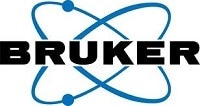In today’s industrial quality control, attenuated total reflection (ATR) is used to measure most FTIR spectra because minimal sample preparation is required in this approach. Samples such as liquids, powders, or pastes can be easily placed on the diamond ATR crystal and are analyzed in a matter of seconds. The recorded spectra are usually compared against reference libraries to detect the sample’s chemical composition.
Limitations Faced in Dark Samples
Previously, dark samples, including polymers and other high carbon black samples, have not been effective for diamond or ZnSe ATR. For such samples, the accessory, or even the ATR crystal, would need to be substituted for a Germanium ATR element which tends to exhibit a higher refractive index when compared to ZnSe or diamond.
ATR Correction
Bruker has developed an advanced and powerful method for converting FTIR spectra measured in ATR mode into absorption spectra. The advanced ATR correction technique eliminates the need for substituting the ATR crystal. This novel ATR correction has been applied in Bruker’s latest release of OPUS, version 7.2, which was launched in February 2013 and implemented in all spectrometers.
Unlike standard ATR correction algorithms which only rectify for intensity, the ATR correction method also corrects for band distortions that occur from irregular dispersion when the critical angle is surpassed. With the help of the ATR correction method, spectra of high quality can be obtained from nearly all dark materials by ATR with crystals made from diamond or ZnSe.
The ATR correction is a powerful method developed for use on Bruker’s ALPHA-P FTIR spectrometer. This FTIR system features a single bounce diamond ATR. It is compact and widely used for quality control in manufacturing, organic coatings, chemicals, and polymer studies. For research and development applications, the ATR correction method can also be applied to data collected on Bruker’s VERTEX and TENSOR spectrometers.

Figure 1. ALPHA-P, compact FTIR spectrometer used in industrial quality control
Spectral Range of FT-IR Spectrometer
The spectral range of an FT-IR spectrometer is primarily defined by its choice of detector, beamsplitter and source combination. The lower limit of the spectral range depends on the beamsplitter and is usually limited to 200 cm-1 (CsI) or 350 cm-1 (KBr).
In order to extend the spectral range further into the THz and far IR spectral ranges one or more far IR beamsplitters are needed. Owing to these reasons, the user has to manually open the access flap in the spectrometer optics bench.
Wide Spectral Range Beamsplitter
However, this issue can be overcome with Bruker’s wide spectral range beamsplitter which, along with a DLaTGS source and detector, allows access to the spectral range from 6000 cm-1 to 130 cm-1 in a single step for all types of ATR, reflectance, and transmittance measurements. The new optical device matches the automatic beamsplitter changer unit BMS-c for the VERTEX 80 high end research FTIR spectrometer series, which was launched in 2010.
When a second detector position and far IR DTGS detector are fitted into the VERTEX 70/VERTEX 70v spectrometers using the same beamsplitter, the spectral range can be extended to 30 cm-1 under complete software control. In addition, this automatic mode can be extended down to 10 cm-1 with an automatic source switching and externally adapted mercury arc lamp.
Extending the mid IR towards the far IR spectral range of less than 400 cm-1 holds huge potential for molecular vibrational analysis in organometallic and inorganic chemistry, as well as geological, physical, and pharmaceutical applications. The ATR measurements of Ascorbic Acid (blue curve) and Calcium Carbonate (red curve) shown in figure 2 demonstrates that with the combination of wide band beamsplitter T240/3 and the Bruker VERTEX 70 or VERTEX 70v FT-IR spectrometers the spectral range from 4000 cm-1 to 130 cm-1 is easily covered in a single step.

Figure 2. ATR measurements of Calcium Carbonate and Ascorbic Acid
Conclusion
Bruker’s ATR correction method eliminates the need for exchanging the ATR crystal when studying carbon filled polymers and other highly absorbing materials. Bruker also offers a wide band beamsplitter T240/3 for the VERTEX 70 entry level research FTIR spectrometer series. The beamsplitter enables all standard IR measurement methods to benefit from complete spectral range coverage from 6000 cm-1 to 10 cm-1 without the necessity of exchanging the beamsplitter.

This information has been sourced, reviewed and adapted from materials provided by Bruker Optics.
For more information on this source, please visit Bruker Optics.